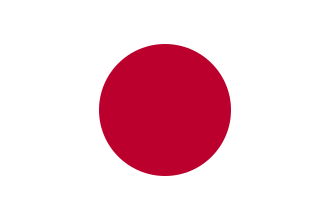Rosh HaShanah, the Jewish New Year, is one of the most well known Jewish holidays, with many beautiful customs attached to it. We dip our challah and apples in honey for a sweet year, eat pomegranates representing the 613 mitzvos, and place the head of a fish on our table. Why is the head of a fish associated with one of our holiest holidays?
Perhaps the nature of the fish will shed some light on the subject. The fish is one of G-d’s most silent creations, given that there are millions of these creatures around the world. Its appearance is clean and smooth, resembling the Jewish nation, who stands at their purest state during the days of atonement. Yet, like fish, when we delve in the details, we find complexities that we have not noticed before. On the other hand G-d Almighty, with His infinite wisdom, is able to see the large beautiful picture of the Jewish nation, as we can see in the nation of fish.
Is it not timely for us to delve into all of the complexities of the fish that we do not see when we gaze at them from the shore. The shore might have its tale, but we at OK Kosher Certification have our own tale.
Simanim/Kosher Signs
“This may you eat of all that is in the water, everything that has fins and scales” (Vayikra 11:9).
Our sages in the Talmud state that every fish with scales also has fins (Chullin 66b). Scales have since become the single determining sign for kosher fish.
What are scales? Biologists sort them into five types of scales: Placoid, Cosmoid, Gadoid, Ctenoid and Cycloid. However, according to the Jewish Code of Law, scales are fingernail-like protrusions on the skin. They are detachable and, when detached, no damage is caused to the fish. There are some types of fish that have scales, including sturgeons, sharks, eel, etc., that are not considered kosher since their scales are embedded, and when removed damage the skin (Ramban Shemini, Nodeh B’Yehudah 10:28).
Kosher certifying agencies are constantly reevaluating the status of new fish on the market, since not all scales are kosher scales.
Some fish naturally have scales; however, when they leave the water the scales will shed, such as tuna herring and mackerel. Some fish are caught at a young age before they have a chance to grow scales. In either case, the fish can still be considered kosher in one of the following ways:
1. If, by looking under the fins, tail, or gills, you find at least one scale, the fish is kosher.
2. If the skin is still intact, a fish expert who is G-d fearing will examine the fish. If he recognizes the type of fish and knows that this type of fish is kosher, then the fish is kosher. According to halacha one may not rely on a non-frum person to determine a type of fish, even when the skin is on.
Filleted Fish
Once the skin is removed from the fish, there is no way to identify that the fish is kosher. Even a fish expert cannot precisely identify a skinned fish, as it might have a very similar resemblance to a non-kosher fish. Given this complexity, one can appreciate the wisdom of our Sages, who forbade us from eating skinless fish (Kirvei Dagim). There are tens of thousands of fish species and many of them look alike – some are from the same family! However, halachically, it does not matter how similar a non-kosher fish is to a kosher fish – if it does not have scales, it is not kosher. The same goes for the appearance of the flesh – even though a filleted catfish looks identical to sole and tilapia, since it does not have scales, it is not kosher.
The angler or the non-Jewish chef might sell you catfish as sole since, after all, they do look very similar. The US Food and Drug Administration (FDA) states that, in the United States, swapping fish is a very severe crime. However, since they do not have a large enough workforce to control this crime, their prime focus is on fish quality and not on fish swapping.
We can gather from all of these complexities that there is a great need for kosher certifying agencies to supervise fish, from the moment before it is filleted, to ensure the fish is from a kosher species.
Some kosher agencies rely on a Talmudic principal that a tradesman will not jeopardize his reputation and they feel that random supervision is satisfactory. At OK Kosher Certification, we do not accept this halachic loophole. After all, the FDA is not able to control manufacturers who attempt to swap fish. These tradesmen are not showing that they are so worried about their reputation. Therefore, random spot checks are not sufficient to ensure that all of the fish marketed as kosher are actually kosher. For a Torah prohibition of such high significance, one must have full time supervision (Mashgiach Temidi) (Igros Moshe Yoreh Deah 3:8).
Filleted fish raises yet another question: Were kosher knives and the machinery used to fillet the fish?
This is a very serious question since most fish markets carry non-kosher and kosher fish. There is a significant chance that the kosher fish was filleted with the same knife as the non-kosher fish. After all the knives and machinery are technically compatible with both types of fish, so why shouldn’t they use the same equipment?
There may be a difference between a large company specializing in a specific type of fish, and a local fish market. For example, if there is a company that harvests salmon or specializes in selling filleted salmon to fish stores, there is not much concern that they would use non-kosher knives. After all, their company only sells salmon. The skinning machinery is designed just for salmon, so it would be inconvenient to fillet most other types of fish with the same machine. On the other hand, when your local fish markets fillets their fish, they will conveniently use their knives and fillet machine for the next customer’s order, regardless of whether it is a kosher or non-kosher fish.
Even though we concluded earlier that a completely filleted fish cannot be considered kosher, there are still circumstances when the above matter is relevant. Kosher certifying agencies regularly require the vendor leave a patch of skin on the fillet, as a symbol to identify the fish as kosher. Based on the above, most kosher agencies will accept fillet fish with a skin tag coming from a large company. They are not concerned the machines were used for non-kosher fish as well. However, if a local fish store filleted the fish, it is not acceptable. (If one purchases such fish, he should ask his local Rabbi if the fish could be eaten.)
Filleted fish with a patch of skin do not get a kosher pass; one must make sure he finds scales attached to the patch. Otherwise, how can he be sure it is kosher? There have been cases where the OK found companies who wanted to save time, so instead of leaving on the patch, they would glue it back on after the fish was completely skinned. This is obviously not accepted as kosher. The OK came up with two methods to verify that the skin is naturally attached to the fish, and not glued on – identifying the cuts around the patch and soaking the patch in hot water (if the patch falls off, it is clear that it was glued on).
Kosher Fish List
One might ask why there is no clear “Kosher Fish List” put out by kosher certifying agencies. It certainly would make life much easier without having to search for the scales on each piece of fish!
Unfortunately, the common names used for fish are not the most accurate way of describing fish. The common name of a fish on one list can be the common name of a different fish on another list! For example, “red snapper” is generally known as a kosher fish. If it would be on listed on a kosher list, it would be considered kosher. In reality, there are several species fish known as red snapper, but we cannot guarantee that all of those fish are kosher. The same goes for cod and escolar, some types of these fish are non-kosher. The Latin names of fish are much more accurate, but are only useful for those who understand Latin.
Insects
We are very familiar with the issue of insects in vegetables, but the question of insects in fish is unheard of. Yet the Talmud is concerned enough to address this issue. The Sages prohibit all insects found in the belly of the fish, while those found in the flesh are permitted. The Talmud explains that insects found in the stomach are presumed to have been swallowed by the fish and originate from the outside of the fish, rendering it non-kosher, while those found inside the flesh had grown inside the fish itself and are not considered “Shrotzey Hayam” (insects of the ocean) until they exit the fish (Chullin 67b).
There is a conflict here between halacha and science, as scientists claim that even insects found in the flesh originally came from outside of the fish. Most Gedolei Yisroel, however, including HaRav Moshe Feinstien zt”l, are lenient on the matter, and allow insects found in the flesh of the fish (Bedikas Hamazon Kahalacha, Vol. 1, p. 112).
Therefore, one does not have to worry about insects in the fish as long as one cleans the inside of the fish well before cutting it up. For example, when serving fish stuffed with gefilte fish, the cook makes a “belly cut” in order not to open the fish too much. He must make sure that the inside of the fish is perfectly clean, and get rid of any insects, before he stuffs the fish.
Seal
Since the laws of kosher fish are M’deorisa (Torah Law), when transporting fish through a non-Jew, one must seal the fish container with two seals, such as a kosher agency’s sealing tape, mashgiach’s signature, lock, or stamp. Alternatively, one can seal the fish with a “Siman Muvhak,” a known seal, such as a company trademark, that cannot be altered.
Smoked Fish
In today’s fast food world, smoked fish has become quite popular. Lox, sable, and butterfish sandwiches are sold at every take-out café. If we think about this interesting food, some questions might pop up, like:
■ Is it raw or cooked?
■ What makes this fish different from “raw” sushi?
■ Is it required to be Bishul Yisroel?
The answers are – there are two types of smoked fish: hot smoked and cold smoked. A manufacturer can use the same smoke house for both procedures and apply smoke to both hot and cold smoked fish. However, there is a difference in the level of heat added (less than 80 F). Cold smoking will take longer to smoke the fish since it cooks mostly with smoke and a small amount of heat. Hot smoking relies mostly on heat, therefore requiring less time to smoke the fish.
Accordingly, cold smoked fish does not need to be Bishul Yisroel, since it is not smoked with heat. Hot smoked fish is required to be Bishul Yisroel, since it is considered cooked. Some companies opt to use an entirely different process – baking the fish in a commercial oven, with a small amount of smoke added at the end of the cooking cycle for flavor. Fish processed with this method is required to be Bishul Yisroel.
Regardless of the smoking process, smoked fish needs proper kosher supervision to verify whether is was cold smoked or hot smoked; no non-kosher ingredients were added; the salting procedure done before smoking was kosher; and, that the smoke house was not also used for non-kosher fish.
It is interesting to note that whitefish salad, smoked salmon, and lox spread must be Bishul Yisroel, since they are usually made from hot smoked fish.
Canned Tuna
Although tuna fish are found in both the Atlantic and Pacific oceans, canned tuna generally comes from tuna that inhabit the Pacific Ocean, specifically off the coast of the Far East. Countries like Indonesia, Thailand, and the Philippines are known for their large labor force and low wages. Therefore, those countries provide the most cost effective places to produce canned tuna.
Tuna are fished in deep waters, well off the coast. The anglers will sail out to the ocean for several weeks at a time and the fish are only cleaned and skinned when they arrive at the cannery. This satisfies the kosher requirements and ensures that the tuna is kosher.
Contrary to popular belief, not all varieties of tuna are kosher. The most popular kosher tunas include Skipjack, Albacore, and Yellowfin. The anglers might catch other fish, which they call “by catch.” They will not necessarily remove these fish until they reach the cannery. These facts further underline the importance of Hashgacha Tmidis to ensure that no non-kosher fish end up in the tuna can.
Once they arrive at the plant, the fish are gutted, cleaned, and steamed. In order to avoid Bishul Akum the mashgiach must turn on the boiler, which creates the steam for the entire plant.
After the steaming process, the tuna cooled, which facilitates the skinning and cleaning of the fish. Once it is cleaned and the head has been removed, the canning begins, dividing the tuna to the solid and chunk pieces
Since the plant is not kosher full-time, kosherization is necessary to prepare for kosher production. Supervision throughout the entire process is necessary to ensure that the manufacturer cans only the kosher tuna, they do not add non-kosher ingredients, and they use only kosher utensils. Due to the complex nature of canned tuna, it is important to purchase tuna from a reliable hechsher to ensure that the tuna was produced according to the highest kosher standard, including Hashgacha Tmidis and Bishul Yisroel.
Salmon
As mentioned earlier, one cannot assume a filleted fish to be kosher. One cannot rely on tevias ayin to identify kosher fish. There is an exception to this rule. Trout and salmon are unique in the color of their flesh, their distinctive pinkish – reddish color can serve as a proper siman, to identify that it is in fact a kosher fish. According to the research done by OK Kosher Certification, there is no non-kosher fish whose color matches that of salmon or trout.
However, recent developments have raised some concerns to the OK and other kosher organizations. The fisheries were reporting shortages in the quantities of salmon caught yearly. In search for a solution, they created salmon farms, where they farm salmon for consumption. They designed the farms to artificially replicate the natural environment the salmon were raised in. The owners of salmon farms found that the flesh of farmed salmon is noticeably paler than the flesh of “wild” salmon. To enhance their color, the fish are fed a dietary supplement, astaxanthin, an anti-oxidant from the same family as beta-carotene (naturally found in carrots and sweet potatoes).
Based on the above scenario, how can we be assured that the same is not done to non-kosher fish? If one is able to enhance the color of salmon from pale to pinkish – reddish, why do we not suspect this is done to a non-kosher fish, so it can be sold as salmon? The OK extensively researched this matter and found that although one can enhance the color of pale salmon, to the standard pinkish – reddish, the carotenes cannot completely change the flesh color of another fish to look like salmon.
An additional concern brought up by kosher organizations is a red dye injected into the flesh of a fish to make it look like salmon. This has also proven not to be a problem, because it would be very hard to conceal this procedure. In order to dye the fish, many needles are used, which leave visible holes in the flesh of the fish. In addition, the dye would not disperse evenly and one would notice inconsistencies in the color. Furthermore, when soaked, salted, or smoked the color would probably not be retained in the flesh. The only way the dye could properly change the color of the flesh, is – as mentioned above – by feeding the fish carotene while in the water, and even then, only salmon can be properly affected by the dye.
Accordingly, many kosher organizations, including OK Kosher Certification will accept salmon as a kosher fish, even if the scales have been removed.
Mackerel
Mackerel is one of the types of fish that sheds its scales when it is removed from the water. According to halacha it is kosher, but in order to render it kosher, a fish expert, who is G-d fearing, must identify that it is indeed a mackerel, and that it is a known kosher fish. In some cases, one can check for scales under the fins, gills, or tail. If he finds at least one scale, it is kosher.
Herring
Herring is another type of fish that sheds its scales upon removal from water. However, one will probably find a few scales still attached to the herring. There is another kosher concern regarding herring. In the past, it was common to find herring with the skin attached; but nowadays it is becoming less and less common. Fish producers found that pickling or spicing herring without the skin works much faster then pickling or spicing with the skin attached. In today’s fast paced world, manufacturers use whichever process is faster.
This raises a concern for kosher organizations, since there are no scales and no skin to tell if the fish is kosher. Some will rely on tevias ayin, saying that herring is recognizable by its distinctive blue-silver color. Others feel that we can rely on the assumption that tradesmen will not jeopardize their reputation. If they were selling to a herring market, they surely would not want to be caught selling another fish in the name of herring.
OK Kosher Certification will not certify herring unless there is a mashgiach temidi.
Caviar
The Beis Yosef (Yoreh Deah 83, 8) rules that all red fish eggs (caviar) are kosher, and all black fish eggs are not kosher. In our modern times, one can easily dye eggs red. On the other hand, the size of kosher caviar is a few times larger the non-kosher caviar and kosher caviar is much cheaper than non-kosher caviar. Yet, in order to ensure the caviar is dyed with a kosher dye, it must have a reliable kosher supervision. Therefore, OK Kosher Certification requires Hashgacha Tmidis.
Omega-3 Fish Oil
Even if the manufacturer states clearly on the bottle that the Omega-3 is made from salmon and other kosher fish oils, one cannot deduce that it is kosher. Fish oils need supervision from the point the scales are removed until they are bottled and sold.
For buying fish at a non-kosher fish market
1 Check fish for scales by pulling out a scale from its flesh. It should be easily removable. Then check the skin to make sure no damage was done when pulling out the scale. (Some are machmir to check for scales by the fins, gills, or tail.)2 If one does not find scales on the fish, he should check by the fins or tail. Often when the scales fall off, some remain by the fins or tail. (According to the Rama if one found one scale on the fish, it is not kosher, unless it was found at the fins, gills, or the tail). Otherwise, you can get an opinion from a fish expert who is a religious Jew. If he can recognize the fish species and he tells you that there is a Masores that this fish is kosher, it is adequate, as long as the skin is attached.
3 If the fish is filleted, and a patch of skin is still intact, it is kosher provided that you can determine that the skinning machinery is kosher. This is usually a question for your local Orthodox rabbi.
4 If the fish is filleted with a patch of skin, without scales, it cannot be considered kosher.
5 If there is no skin, the fish cannot be considered kosher. Salmon is an exception to this rule, as long as you can identify the fish as salmon, and ensure that the skinning machinery is kosher.
6 Fish caviar cannot be considered kosher and needs proper kosher supervision.
7 Bring your own knife, knife sharpener, and cutting board. Make sure the knife is sharp enough to cut fish. Otherwise, you can use their knives as long as they scrub the knife well with steel wool and remove any fish grease. It is recommended to clean the fish before cutting it, to insure that no insects enter the flesh of the fish.
8 Needless to say, one must be there as a Mashgiach Tmidi during the entire production, until purchasing fish sealed with a kosher seal.


 EN
EN  ZH
ZH  KR
KR  BR
BR  ES
ES  IN
IN  IL
IL  JP
JP 



